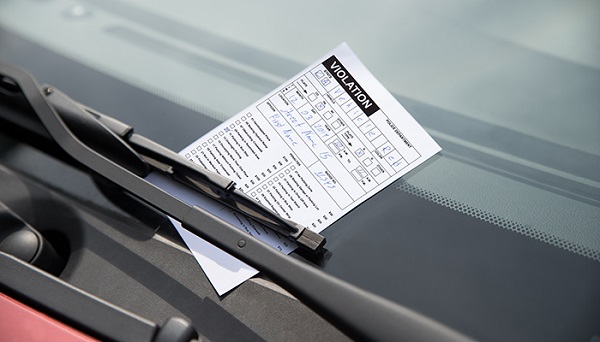City of Red Deer
City of Red Deer declares local emergency

From the City of Red Deer
State of local emergency declared in Red Deer amidst COVID-19
The City of Red Deer declared a state of local emergency at 9:20 a.m. Monday, March 16, to assist the Province of Alberta’s efforts to combat and respond to the spread of COVID-19. The state of local emergency gives The City access to additional resources, and special powers under the Emergency Management Act including personnel, from other orders of government if required.
“The City of Red Deer takes emergency management very seriously,” said Mayor Tara Veer. “We are actively working with other orders of government, agencies and partners to ensure our community response is in alignment with the recommendations from Alberta’s Chief Medical Officer of Health, Dr. Deena Hinshaw. Our top priority is the health, safety and well-being of all our citizens as we respond to the issue and work to maintain essential services to our community.”
While the risk to residents remains low, we remain vigilant and prepared to support our community’s needs
Other measures being taken by The City at this time include:
- All City of Red Deer operated recreation and culture facilities are closed to the public effective Sunday, March 15, 2020.
- Continued activation of The City of Red Deer Emergency Operations Centre
- Continued activation of The City of Red Deer call centre daily from 8 a.m. – 8 p.m. for residents to make non-emergency inquiries about City services and policies (403-342-8111)
- Enhanced cleaning and janitorial services in high traffic areas
- Mandatory 14-day isolation period for City employees who are symptomatic and/or have returned from international travel after March 12, 2020.
- Notifying customers affected by program cancellations and City facility closures.
- Revised cancellation policies for passes, programs and room rentals. Details are posted at www.reddeer.ca.
- Security and staff will remain on site at the closed facilities to support the management of the city assets.
- In addition, the following City facilities remain open to the public at this time, however with potentially amended service levels.• City Hall and Professional Building
• Sorenson Station and Red Deer Transit service • the downtown Red Deer RCMP detachment“We know this is a difficult and stressful time for everyone, including residents and our employees,” said Allan Seabrooke, City Manager. “We are working around the clock to protect our community. We have implemented a number of measures already and we will continue to do so to protect our residents. I want to thank everyone for support and patience so far.”
Residents are reminded not to attend City facilities or any public facilities if they are feeling ill. Call Alberta Healthlink at 8-1-1 for non-emergency health information about COVID-19 and 9- 1-1 only in the case of a life-threatening emergency or crime in progress.
The COVID-19 outbreak remains a fluid situation and information can change quickly and often. The City of Red Deer is prepared to make additional changes to policies as required in order to keep residents safe and reduce the risk of spreading the virus. Residents are urged to visit the Alberta Health Services website at www.ahs.ca for the most up to date information.
Learning at home? Here’s a list of links to take you on a “Virtual Field Trip”
City of Red Deer
Red Deer will choose a new Mayor as Ken Johnston decides to step away

It’s a telling detail about the person who leads Red Deer City Council. Always putting the city’s needs ahead of his own, Mayor Ken Johnston has announced his intentions within days of the opening of Nominations for October’s municipal elections,
After 12 years on council, Mayor Ken Johnston has decided against running for a second term as Mayor this fall. Johnson shared his decision in front of colleagues and supporters in a touching announcement on Wednesday.
At 71 years old, Johnston remains vibrant, passionate and healthy. He says that’s exactly why he and his wife Carolyn have decided now is the right time to start their next stage of life together.
Mayor Johnston listed a number of highlights and achievements he can look back on, including his help advocating for the redevelopment of Red Deer Regional Hospital, the growth of Red Deer Polytechnic, and positive moves in Economic Development.
All these lead of a feeling of ease about the decision to step away, though affordable housing and a permanent shelter for the homeless remain pressing concerns.
With about 8 months remaining in his term, Mayor Johnston is planning to push hard to move the needle on these housing issues.
“We’re looking forward to some more work and we’ll be going to the community shortly about it. So I still have optimism that maybe before the term is out we can have an announcement.”
This is the second major political announcement in Central Alberta in the last number of days. Earlier this week Red Deer Mountain View MP Earl Dreeshen announced he won’t be running in the next federal election.
City of Red Deer
Council ends reduced fine option for early ticket payment, school and playground zones start at 7 AM

City Council approves first reading of updated Traffic Bylaw and General Penalty Bylaw
Red Deer City Council completed first reading of updated Traffic Bylaw (3707/2025) and General Penalties Bylaw (3036/A-2025) that will provide clarity and consistency in application of the bylaws as well as eliminate challenges in enforcement.
Key updates to the bylaws include:
- Ticket Pre-Payment:
- Removing the option to pay a parking ticket early to receive a reduced fee from the General Penalty Bylaw and adding it to the Traffic Bylaw.
- School and Playground Zone Start Times:
- Through investigating requests from schools to have school and playground zones start at 7 a.m., rather than 8 a.m., Administration determined that almost all school and playground zones in the city have students on the street prior to 7:30 a.m. To be consistent across the city, the start time is being moved to 7 a.m. providing an added measure of safety for all students.
- Salt on Sidewalks:
- Removing the provision prohibiting the use of salt on sidewalks as this provision was rarely reported and it is difficult and costly to enforce.
- Permits:
- More structure was added to the bylaw to clearly articulate conditions and requirements of Use of Streets Permits, as well as Excavation Permits and Alignment Permits.
- Lastly, fees for closures impacting on-street and off-street stalls have been adjusted to reflect the actual revenue in each parking zone rather than the flat fee.
- Penalties:
- Penalties have been reviewed and updated.
- During the last bylaw adoption, the penalty associated with vehicles being towed due to snow or street sweeping operations was inadvertently missed. This penalty has been added back in at a slightly higher amount due to an increase in the cost to tow a vehicle through The City’s contractor. This prevents the costs associated with towing vehicles during these operations from being subsidized by the tax base.
“These updates streamline the bylaws to create clarity for residents and administration,” said Erin Stuart, Inspections and Licensing Manager with The City. “They also help to eliminate regulations that are challenging to enforce and bring penalties in line with other City Bylaws.”
Second reading of both bylaws is anticipated for January 27, 2025.
-

 Business1 day ago
Business1 day agoDOGE discovered $330M in Small Business loans awarded to children under 11
-

 2025 Federal Election1 day ago
2025 Federal Election1 day agoThe High Cost Of Continued Western Canadian Alienation
-

 COVID-191 day ago
COVID-191 day ago17-year-old died after taking COVID shot, but Ontario judge denies his family’s liability claim
-

 Daily Caller1 day ago
Daily Caller1 day agoCover up of a Department of Energy Study Might Be The Biggest Stain On Biden Admin’s Legacy
-

 2025 Federal Election1 day ago
2025 Federal Election1 day ago2025 Federal Election Interference from China! Carney Pressed to Remove Liberal MP Over CCP Bounty Remark
-

 2025 Federal Election1 day ago
2025 Federal Election1 day ago2025 Election Interference – CCP Bounty on Conservative Candidate – Carney Says Nothing
-

 Business2 days ago
Business2 days agoCuba has lost 24% of it’s population to emigration in the last 4 years
-

 2025 Federal Election1 day ago
2025 Federal Election1 day agoPoilievre on 2025 Election Interference – Carney sill hasn’t fired Liberal MP in Chinese election interference scandal





